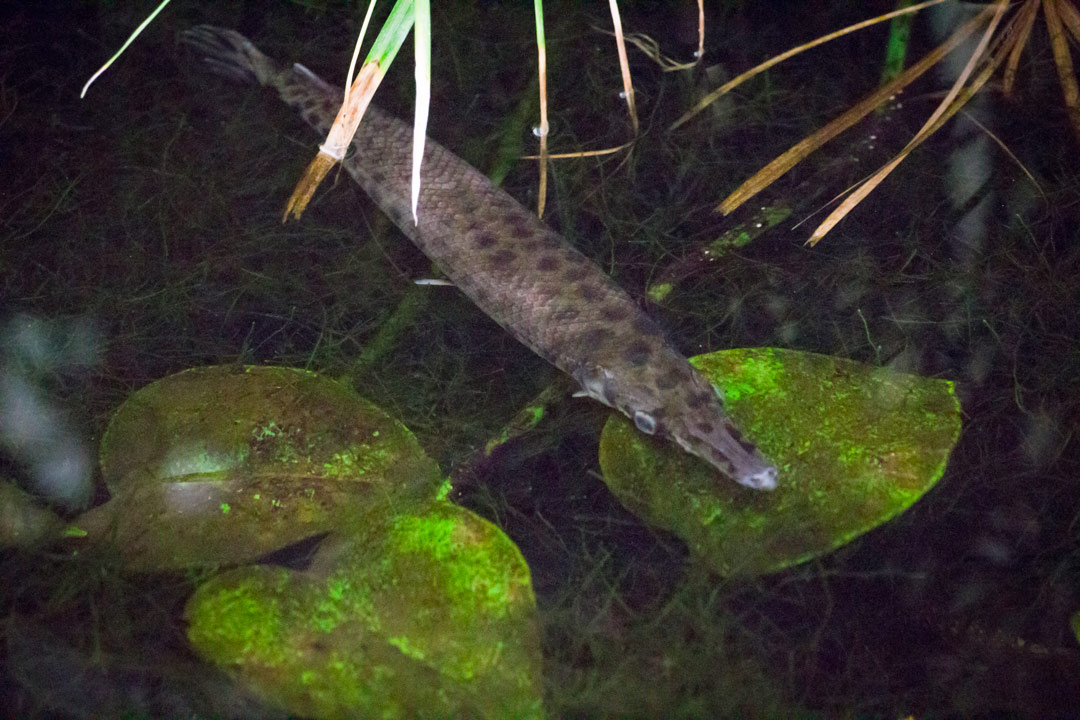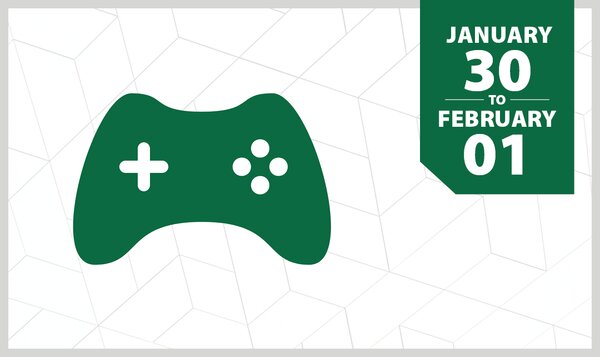
USask’s Teri the spotted gar dies
Prehistoric fish charmed Museum of Natural Sciences visitors for more than 20 years
By Chris Putnam
One of the most unique animal inhabitants of the University of Saskatchewan (USask) has passed away.
Teri the spotted gar, a member of a prehistoric fish family who resided for more than 20 years at the USask Museum of Natural Sciences, died last week following a slow age-related decline.
“Teri will be very much missed as a feature in the museum and a part of the USask history. What a special little fishy,” said Sue Johnson, who worked as a technician in the Museum of Natural Sciences and as one of Teri’s caretakers for 15 years.
Teri was likely one of the oldest members of its species ever recorded. The fish arrived at the Museum of Natural Sciences in 1999 as a full-grown adult. Some long-time USask faculty and staff members even claim to remember the fish living for a time at the previous biology museum in the early 1990s, but no records survive to confirm that.
Teri’s sex was never determined; it was named Teri by a cheeky staff member in the Department of Physics and Engineering Physics in honour of comic actress Teri Garr.
An ambush predator, Teri preferred to float among the vegetation of its pond in perfect stillness, well-camouflaged and awaiting its next meal.
Rumours of Teri’s earlier death were exaggerated.
“He was noted in every position possible, except on his back. Vertical was always a good one he executed regularly,” said Johnson.
Reports from visitors that the gar was dead were so common that museum staff kept a special “gar stick.”
“The stick was used by staff to gently push up from the belly a little and that always elicited a response and a deep dive into the vegetation, a nice discussion about Teri, and a happy ending,” recalled Johnson.
Teri had a close call in 2005 when an accident with the water supply to its pond injured Teri and killed a second gar that shared the pond. Teri was fortunate enough to survive, but was never the same afterwards.
Gars are the only living members of an ancient group of bony fish that first appeared more than 240 million years ago. Spotted gars are freshwater fish native to North America, including some lakes in Southern Ontario.

Their prehistoric lineage gives spotted gars some unusual features, including a long crocodile-like snout full of sharp teeth. The fish can even breathe air from the surface using a special swim bladder.
Some USask students reported that Teri was an aquatic oracle who could foretell the outcome of a final exam.
As spotted gars are considered endangered in Canada, the museum needed a special federal permit to keep Teri. Further paperwork was required to handle the ethical considerations of caring for a creature that eats live minnows.
Teri craved fresh prey. Nothing else would do.
“I would like to take this opportunity to acknowledge and bow to the minnows that were sacrificed to feed this little fish over its years,” said Johnson.
At one point, museum staff experimented with offering Teri “less sentient food” such as earthworms and crayfish, Johnson said.
Teri had no interest in either, but the crayfish tended to escape the pond and wander the building at night. Staff of the science library were displeased to find crayfish sauntering through their space on more than one occasion. The alternate feed project was abandoned.
Current and former staff of the Museum of Natural Sciences are mourning the loss of Teri the gar and reminiscing about its long and eventful life.
“Teri's passing has brought so very many re-connections with people, biological discussions and memories of a time and place. He was a bright spot in a day where it just made sense to take a break and look for a lucky fish,” said Johnson.


